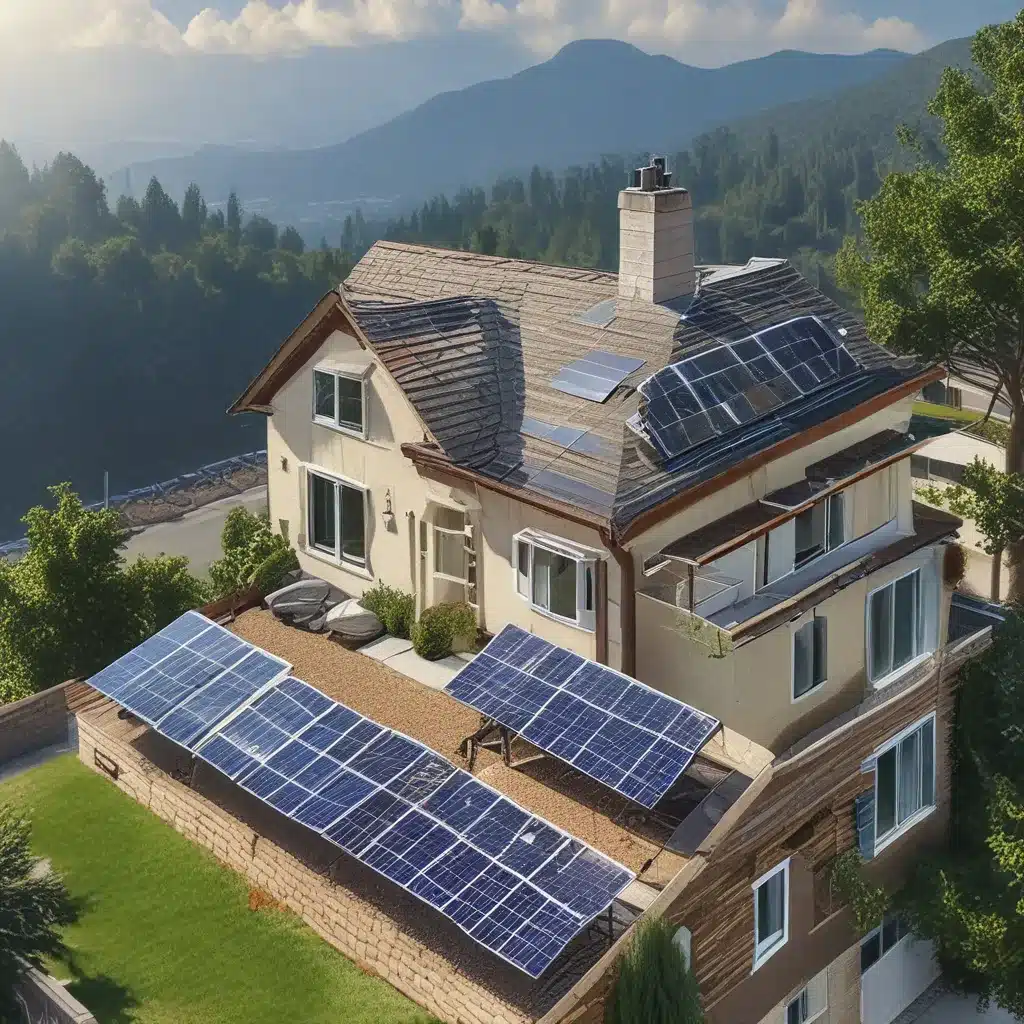
As a proud solar panel owner, I know the excitement of harnessing the power of the sun to offset my energy costs. But let me tell you, those sleek black panels on my roof aren’t just a pretty sight – they require a bit of TLC to keep them running at their best. That’s why I make it a point to do a monthly checkup on my solar setup. It may seem like a chore, but trust me, it’s worth the effort.
The Importance of Regular Maintenance
I’ll never forget the time my neighbor came running over, frantic about his system’s sudden plunge in power output. Turns out, a giant oak tree had grown up and started casting a shadow on his panels. Had he been keeping an eye on things, he could have nipped that problem in the bud before it became a major issue. That’s the thing about solar – it’s a low-maintenance technology, but it’s not completely hands-off.
Regular checkups are the key to keeping your solar panels operating at peak performance. Even the most robust systems can succumb to the elements over time. A few minutes spent inspecting your setup each month can save you from costly repairs down the line. Think of it like getting your car’s oil changed – a little preventative care goes a long way.
What to Check During Your Monthly Solar Inspection
Alright, let’s dive into the nitty-gritty. Here’s the checklist I follow to keep my solar system in tip-top shape:
1. Check for Dirt and Debris
Mother Nature has a way of making a mess, doesn’t she? Wind, rain, and the occasional bird bombing can leave your panels coated in grime. While a light dusting usually isn’t a big deal, heavy buildup can seriously impact your system’s efficiency.
I make it a point to do a quick visual inspection each month to see if my panels need a cleaning. If they’re looking a little dull, I’ll grab my trusty long-handled broom and give them a gentle wipe-down from the ground. No climbing ladders for this guy – safety first!
2. Inspect the Roof Rack
Your solar panels are anchored to your roof using a sturdy metal frame, called a rack. This rack is the backbone of your system, so it’s important to make sure it’s in good shape.
I’ll head up to the attic once a month and check for any signs of leaks or structural issues. Missing bolts or corrosion are red flags that it’s time to call in the professionals for a closer inspection. Better to catch these problems early before they lead to a full-blown system failure.
3. Look for Damage
Let’s face it, Mother Nature can be a real diva sometimes. Hailstorms, fallen branches, or even the occasional rambunctious squirrel can wreak havoc on your solar panels. That’s why I make it a point to do a thorough visual inspection each month, looking for any cracks, chips, or other signs of damage.
If I spot anything concerning, I don’t try to fix it myself. That’s a job for the experts. I simply give my solar installer a call, and they can come out and assess the situation. Trying to tinker with a system that’s hooked up to your home’s electrical grid is a recipe for disaster, so I leave that to the pros.
4. Monitor Your Inverter
The unsung hero of the solar setup is the humble inverter. This little box is responsible for converting the direct current (DC) generated by your panels into the alternating current (AC) that powers your home. And let me tell you, it’s got a tough job.
I make it a point to check the status lights on my inverter each month. If I see anything out of the ordinary, like a red or orange light, I know it’s time to investigate further. Error codes on the display can clue me in to potential issues, and I’ll consult the user manual or reach out to my installer to get to the bottom of it.
5. Track Your System’s Performance
Here’s the fun part – monitoring your solar panel’s power output! Most modern systems come with handy online portals or apps that let you track your daily, monthly, and annual energy generation. I love logging in and seeing how many kilowatt-hours my panels have produced.
If I notice a sudden dip in performance, that’s a surefire sign that something’s amiss. Maybe the inverter is on the fritz, or perhaps a bird has decided to make a home in one of my panels. Either way, I know it’s time to spring into action and get my system back to peak efficiency.
Some solar owners even invest in third-party monitoring systems for an extra layer of insight. These can provide detailed analytics and even send alerts if your output starts to drop. It’s like having a solar-powered personal trainer, keeping me on track and making sure I’m getting the most out of my investment.
The Rewards of Diligence
I know, I know – it sounds like a lot of work. But trust me, the payoff is worth it. By taking the time to thoroughly inspect my solar setup each month, I’m able to catch small issues before they balloon into big, expensive problems.
Plus, keeping my panels in tip-top shape means I’m maximizing their energy production. That translates to bigger savings on my electric bill and a greener footprint for my household. It’s a win-win in my book!
So, fellow solar enthusiasts, don’t neglect those panels. Embrace your inner handyman (or woman) and make monthly checkups a part of your routine. Your wallet and the environment will thank you. And who knows, you might even have a little fun playing solar detective along the way.
Now, if you’ll excuse me, I’ve got some panels to inspect. Catch you on the flip side!


